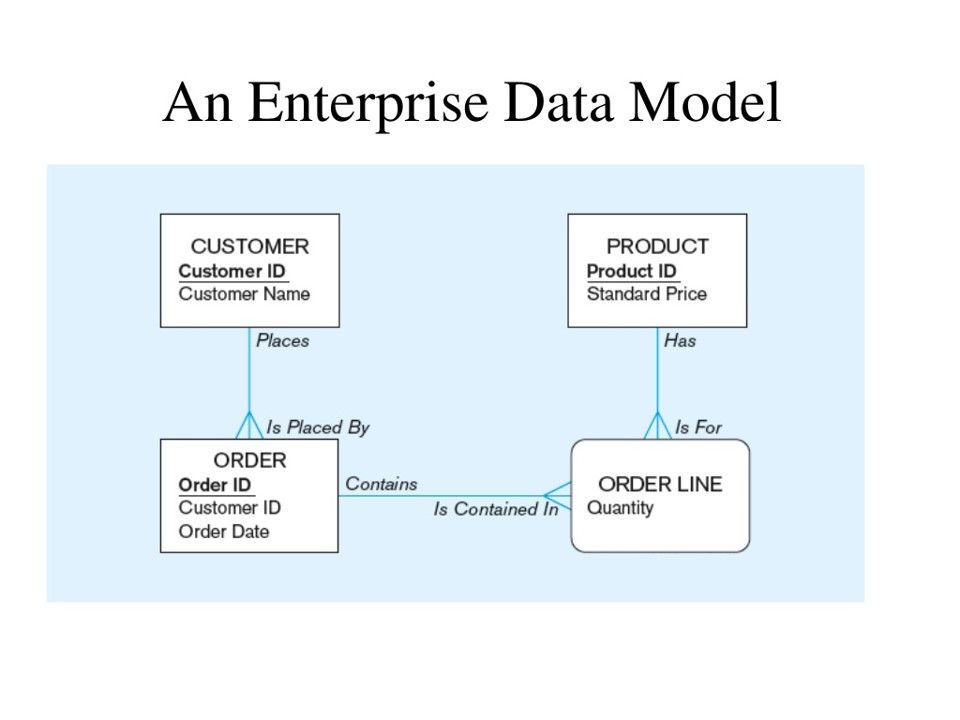
What are the challenges of data modeling?

What is an enterprise data model?
An enterprise data model is an integrated view that outlines how data is organized and structured within a company. It defines the relationships between different data elements using a standardized schema.
The model should be aligned with the company's business processes. It helps decision-makers gain access to the information they need to make data-driven choices.
Why develop an enterprise data model?
Enterprise data model is an important aspect of data governance and data management.
EDM involves the design of an ETL architecture -- so organizations can efficiently bring data from various sources into one data repository.
What is the difference between an entity and enterprise data model?
Entity data model focuses on:
- The conceptual design of data, describing relationships between entities, independent of physical storage.
- Providing a foundation for the organization's data architecture and reducing data redundancy.
Enterprise data model focuses on:
- The overall data landscape of the organization.
- All aspects of data integration, including physical data models.
- Providing a comprehensive view of the organization's data, including metadata and data governance.
- Ensuring data consistency across the enterprise.
- Usually, a data architect creates the entity data model. In contrast, a team of data experts from various departments creates the EDM.
What are the benefits of data modeling?
- Data modeling provides a visual representation of data assets and their relationships. This helps in making data sources easier to understand and manage.
- Data modeling ensures consistent structure and quality of data across the enterprise. This leads to more efficient and effective decision-making.
- Data modeling facilitates communication between stakeholders. It helps align data requirements with business goals.
What are the challenges of data modeling?
The biggest challenge is accurately defining the data requirements for the information system. This requires careful consideration of the data's structure, quality, volume, and usage.
- Another challenge is keeping the balance between being detailed and flexible. The model needs to be detailed enough to accurately reflect the data. It also should be flexible enough to accommodate future changes or growth.
- The third challenge is managing relationships between data. For example, working with foreign keys when maintaining the relationships between data. It requires a deep understanding of the underlying data structures and how they are related.
What are the components of an enterprise data model?
1. Subject Area Model
A subject area model focuses on a specific business area. Some examples of those business areas are sales or marketing.
A subject area model defines business concepts and entities. It is also able to identify data marts and data quality issues.
2. Conceptual Data Model
A conceptual data model is a high-level representation of the data structures. Conceptual data models align with the business needs and requirements. Its purpose of it is to provide a semantic understanding of the data. Eventually, they are used to communicate business concepts to business users.
3. Conceptual Entity Model
A conceptual entity model is similar to a conceptual data model. However, it focuses on the entities and relationships within the data structure. It helps define the structure of data and is used as a basis for creating a more detailed logical model.
4. Logical Model
A logical model is a detailed representation of the data structure. You need to consider business rules and data quality requirements when creating logical models. It is used as a blueprint for the physical data model. Logical models are independent of any specific technology or database.
5. Physical Model
A physical model is a representation of the data structure in a specific database management system. It uses data modeling tools to create a database schema. This database schema implements the logical model mentioned above.
What are some enterprise data modeling techniques?
Entity Relationship (E-R) Model
The Entity Relationship Model is a popular technique for modeling tabular data. It involves creating graphical representations of data objects, their attributes, and their relationships. This technique is ideal for designing relational databases. ER models also provide clear visuals of database schemas and top-level data.
UML (Unified Modeling Language)
- widely used technique for enterprise data modeling. It is a powerful tool for designing information systems and modeling the structure of data objects within an enterprise.
UML provides a series of notations. You can use them to model the behavior and relationships of data objects in a clear and concise manner.
You can use UML for creating:
- Class diagrams - define the classes, methods, and attributes of databases.
- Activity diagrams - show the flow of activities or tasks within a system.
- Sequence diagrams - show the interactions between objects in a system.